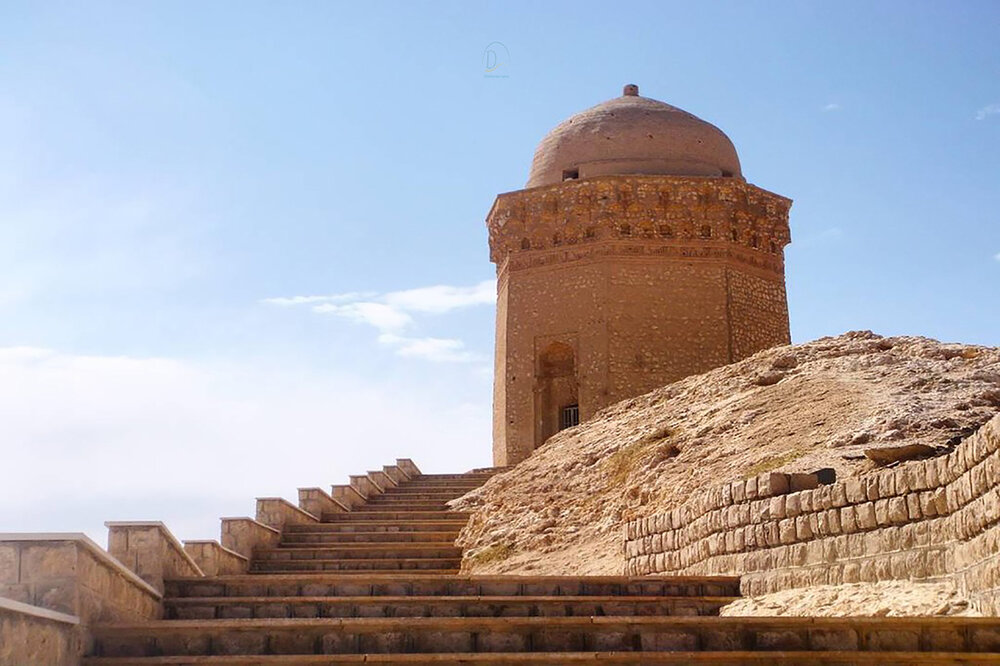Medieval tomb towers of Iran: Gonbad-e Aali

TEHRAN – Perched on a small desert hill, Gonbad-e Aali is a mudbrick domed tomb tower located three kilometers to the east of Abarkuh, along a road that leads to Yazd in the central Iranian plateau.
The monument was built in c. 1055 for a local figure Amid ad-Din Shams ad-Daula and his wife, whose name is not known.
According to Archnet, the tomb tower consists of an octagonal chamber that sits on a low base with eight unequal sides and a tall, projecting muqarnas cornice.
The chamber tapers inward on the exterior so that the structure is wider at the bottom than it is below the cornice. The entrance to the chamber was located on the northeast side of the building.
The structure is now domed, but the extension of the cornice beyond this dome suggests that it was also capped by a pyramidal roof, as was customary for tombs in this region.
The tomb is constructed almost entirely of rubble masonry, with brick used only in the inscriptions and in the construction of the interior dome. The walls are left plain while the cornice and entrance receive most of the decorative treatment. The cornice of the monument is a three-tier muqarnas, which tapers outward. Below the muqarnas is a band of Kufic inscription in Arabic containing the name of the builder and the name of the person to whom it was dedicated.
The entry is set inside a deep niche crowned by a semi-vault and placed within a rectangular outer frame. The entrance is flanked by two columns, of which only the cavities remain. A band of niches, two on each side, decorates the walls below the drum. The transition to the drum is achieved with eight simple squinches located at the corners of the octagon. Four openings in the dome and a window on the side of the chamber illuminate the interior.
Abarkuh is famed for its several historical castles and fortresses as well as being home to a 4000-year-old cypress, which is inscribed on the National Heritage list. Venetian merchant and explorer Marco Polo described the tree as one of the most stunning cypress trees he had ever seen in Iran.
Having nearly all kinds of historical tombs, museums such as tomb towers, and rack-hewn tombs, Iran is heaven for cemetery enthusiasts and grave hunters.
It might seem odd, but cemeteries as bridges between the present and the past, and the living and the dead, have been drawing their own fans both in groups and individuals, each having specific interests.
A cradle of civilization, Iran is well soaked in history and culture, and never disappoints cultural travelers with almost every taste, even ones interested in cemetery tourism.
AFM
